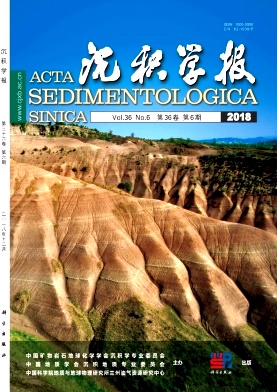Late Cretaceous Oxygen Isotope of Paleoprecipitation in Chaling Basin, Hunan Province
doi: 10.14027/j.issn.1000-0550.2018.107
- Received Date: 2017-11-30
- Rev Recd Date: 2018-03-12
- Publish Date: 2018-12-10
-
Key words:
- oxygen isotope /
- paleoprecipitation /
- pedogeniccalcrete /
- Late Cretaceous /
- Chaling Basin
Abstract: Based on the analyses of lithofacies and cathodo luminescence(CL) images, we measured the carbon and oxygen isotopic ratios of pedogenic calcretes from the Late Cretaceous Daijiaping Formationin Chaling Basin, Hunan province and estimated the paleoprecipitation-oxygen isotopes. Results show that the Daijiaping Formation is characterized by calcisols with in paraconglomerates, which were deposited in an alluvial fan environment along the mountain foot.Calcretes mainly consist of a reddish-brown calcite matrix and light-red calcite vein, corresponding to dull reddish-orange CL or non-luminescence and bright orange CL, respectively.δ18O values range from -7.96‰, VPDB to -11.35‰,VPDB, and δ13C values from -7.30‰, VPDB to -8.24‰,VPDB. The integration of calcite composition, CL, and oxygen isotopes indicates two stages of calcite precipitation have ever been experienced by the calcretes.From the oxygen isotope data, two meteoric calcite lines (MCLs) of δ18O values are recognized as(-9.04±0.18)‰, VPDB and(-8.0±0.11)‰, VPDB from the sample CL-11C4. Subsequently, the δ18Ow values of the Late Cretaceous paleoprecipitation are estimated from -5.76‰, VSMOW to -6.80‰, VSMOW at low paleolatitude (~17.4°N) for the Chaling Basin, consistent with those from the similar latitude in North America and providing basic reference data for the Cretaceous greenhouse hydrologic cycle model and paleoatmospheric circulation simulation.
| Citation: | LIU RuiCen, LI XiangHui, HU XiuMian. Late Cretaceous Oxygen Isotope of Paleoprecipitation in Chaling Basin, Hunan Province[J]. Acta Sedimentologica Sinica, 2018, 36(6): 1169-1176. doi: 10.14027/j.issn.1000-0550.2018.107 |






 DownLoad:
DownLoad: